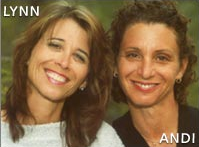Siblings reconnect after spending stretch apart
MAINTAINING TIES
PRODUCED BY JANE CAFFREY
SIBLINGS RECONNECT AFTER SPENDING STRETCH APART
For twelve years, 21-year-old Brady Bennett waited for a birthday. It arrived on September 24, 2009, when his sister Natasha turned 18. Yet Brady did not celebrate with his little sister; he has not seen her for over a decade, when they were put into foster care as young children and separated from each other shortly after. After repeatedly being told by foster care and adoption agencies that it would be impossible to locate his sister while she was a minor, Brady postponed his search, and hopes that Natasha will be easier to locate now that she is a legal adult.
“Every night before I go to bed, I get online and try to think of different words to type in the browser to see what comes up,” said Brady. “I guess I hope to get lucky.”
Across the United States, thousands of young adults like Brady seek to reunite with siblings after they age out of foster care. There are more adults who grew up in foster care searching for their siblings than there are foster care graduates looking for their biological parents, according to a 2002 report published by the National Resource Center For Foster Care and Permanency Planning (NRCFCPP) at the Hunter College School of Social Work.
VIDEO STORY
 Related Content
Related Content
[Watch Now]
“Regardless of what the courts do legally, when kids leave care they seek to re-establish bonds with their family,” said Glenn Metsch-Ampel, an attorney at Lawyers For Children, a Manhattan law firm that represents foster care children. “What a young person wants or needs, in terms of their family, is not necessarily changed by what the courts do.”
As a child, Brady lived in a farmhouse in Redland, Oregon with his mother, her boyfriend, and three siblings. Angelina, shares Brady’s biological father, while two younger siblings, Natasha and Bobby, are the children of Brady’s mother and her boyfriend. Trapped in an environment of drug use and abuse, the tiny siblings formed a strong bond.
“We were in a really bad living situation, so we took care of each other,” said Brady. My mom and her boyfriend were on drugs. Sometimes they would leave us on our own for a week, and we were out in the middle of nowhere, so it was just us.”
All four children were removed from the home and put into foster care when Brady was eight, Angelina was seven, Natasha was six, and Bobby was two. After a short stay, Brady and Angelina moved in with their biological father, while Natasha and Bobby remained in foster care. When supervised visits were terminated to conceal the children’s location from their mother’s boyfriend, contact between the siblings ceased.
Twelve years later, Brady is waiting for Bobby’s eighteenth birthday to arrive in 2013, while tirelessly seeking his sister Natasha. Eighty percent of the search is online, he says, because adoption agencies will not return his phone calls, and he does not have the money to pay for a private detective.
Despite recurrent separation of brothers and sisters in foster care, legislation is geared at keeping sibling groups together. Statute 1055I of the family quota requires that siblings be placed in the same home if possible. Yet when practice meets reality, siblings in foster care are still separated for several reasons, such as in instances of emergency removal, age differences, or lack of a foster home capable of taking a large group. It is also not always in siblings’ best interest to remain together, in cases of abuse, differing relationships with foster parents, or mental or physical health issues, according to Phil Coltoff, NYU Professor of Social Work and former Director of the Children’s Aid Society.
“You really have to look at each situation individually, and not make all-inclusive decisions that all siblings should be together,” said Coltoff. “Someone once pointed out that Cain and Abel were siblings, and they didn’t get along too well.”

After reuniting with her sister as an adult, Lynn Price founded a summer camp for siblings in foster care.
Despite various reasons for being separated, brothers and sisters still view aging out as an opportunity to reunite. In many cases, the quest leads to new bonds, as it did for Lynn and Andi Price. After growing up across town, these sisters became acquainted as adults and discovered an extremely intimate sibling relationship. Lynn Price subsequently founded Camp To Belong in 1995, a summer camp program that allows siblings separated in foster care to share time together.
Yet in other instances reuniting as adults proves challenging, as siblings struggle to join distinct pasts. Julie Palmer-Blackwell, who serves on the Foster Care Alumni of America (FCAA) board, was raised with two sisters in a foster home, but never lived with her youngest sister, who grew up with their biological mother.
“My relationship with my baby sister is very complex, because we didn’t have that lifelong experience together,” said Palmer-Blackwell. “We’ve had to do a lot of work to be connected. Even when you find one another, its not a slam dunk that you’ll automatically be sisters or brothers, because you’ve had a different experience.”
Brady says that despite challenges ahead, he will never give up his search for Natasha and Bobby. He dreams of telling them how much he’s missed them during his childhood, and how he would like to catch up.
“I’m really family oriented, family is such a big deal to me,” said Brady. “I want her to know that I love her, and that I miss her.”
Additional information about sibling relationships in foster care: http://janecaffrey.wordpress.com/
